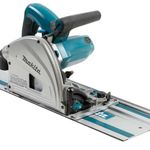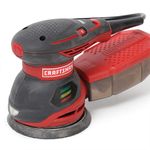Brad-point Bits
Eight brands, 8,000 holes, surprising results
Synopsis: When it comes to drilling wood, it’s clear to consulting editor Chris A. Minick that brad-point bits are simply better than standard twist bits. The profile of a brad-point bit creates a much cleaner hole in most cases, while the brad in the center makes it easy to place the bit accurately on layout lines. What was less clear, however, was whether higher-priced bits are worth the extra money. Eight brands, many cups of coffee, and thousands of holes later, Minick has the answer.
Brands tested for durability, accuracy, efficiency, and chip-clearing ability are the spade-shaped bits from Harbor Freight, Tool Shop, and Fisch Precision; the W-shaped bits, Fisch “Vortex D” and WolfCraft; and the spur-shaped bits, Carbide Tipped from Highland Hardware (now Highland Woodworking), Lee Valley HSS, and Forest City.
I learned long ago that when it comes to drilling wood, reach for a brad-point bit rather than a standard twist bit. The lowangled, blunt point of a twist bit can skate across the wood and leave a curled scar in its path, and makes it difficult to locate a hole accurately. The profile of a brad-point bit creates a much cleaner hole (except in end grain), while the brad in the center of the bit makes it easy to place the bit accurately on layout lines.
In my early woodworking days, I tried cheap bits with predictably bad results. Since then I’ve switched to medium-priced sets, but often wondered if budget-priced bits have improved, or if I should invest in a high-priced set. So I devised a test to find out.
How the bits were tested
I purchased eight brands of seven-bit sets ranging in price from $6 to $63. The bits increased in 1⁄16-in. increments from 1⁄8 in. to 1⁄2 in. Although I tested several sizes, I selected the 3⁄8-in. bit for the most exhaustive testing because it is the one most often used for dowel joints and screw-plug holes.
I drilled more than 1,000 holes with each brand to evaluate the bit’s longevity, its chip-clearing ability, the crispness of the entry and exit holes it created, and the diameter of the hole it produced compared to the drill bit’s diameter. I used both a benchtop drill press set at 1,550 rpm and a cordless drill operating at 500 rpm.
Testing for durability—To see how well the 3⁄8-in. bits fared over time, I used them straight from the package to drill two holes, 1⁄2 in. deep, into 3⁄4-in.-thick hard maple and lauan plywood. Then I drilled two holes through the same materials. At the end of the tests, I drilled a second series of holes adjacent to the first set to compare before-and-after performance.
In between, I drilled 100 holes, 1 in. deep, in hard maple; 875 holes, 1⁄2 in. deep, in particleboard; and another 100 holes, 1 in.
From Fine Woodworking #180
For the full article, download the PDF below:
Fine Woodworking Recommended Products

Ridgid EB4424 Oscillating Spindle/Belt Sander

Makita SP6000J1 Track Saw

Craftsman Random Orbit Sander






















Log in or create an account to post a comment.
Sign up Log in